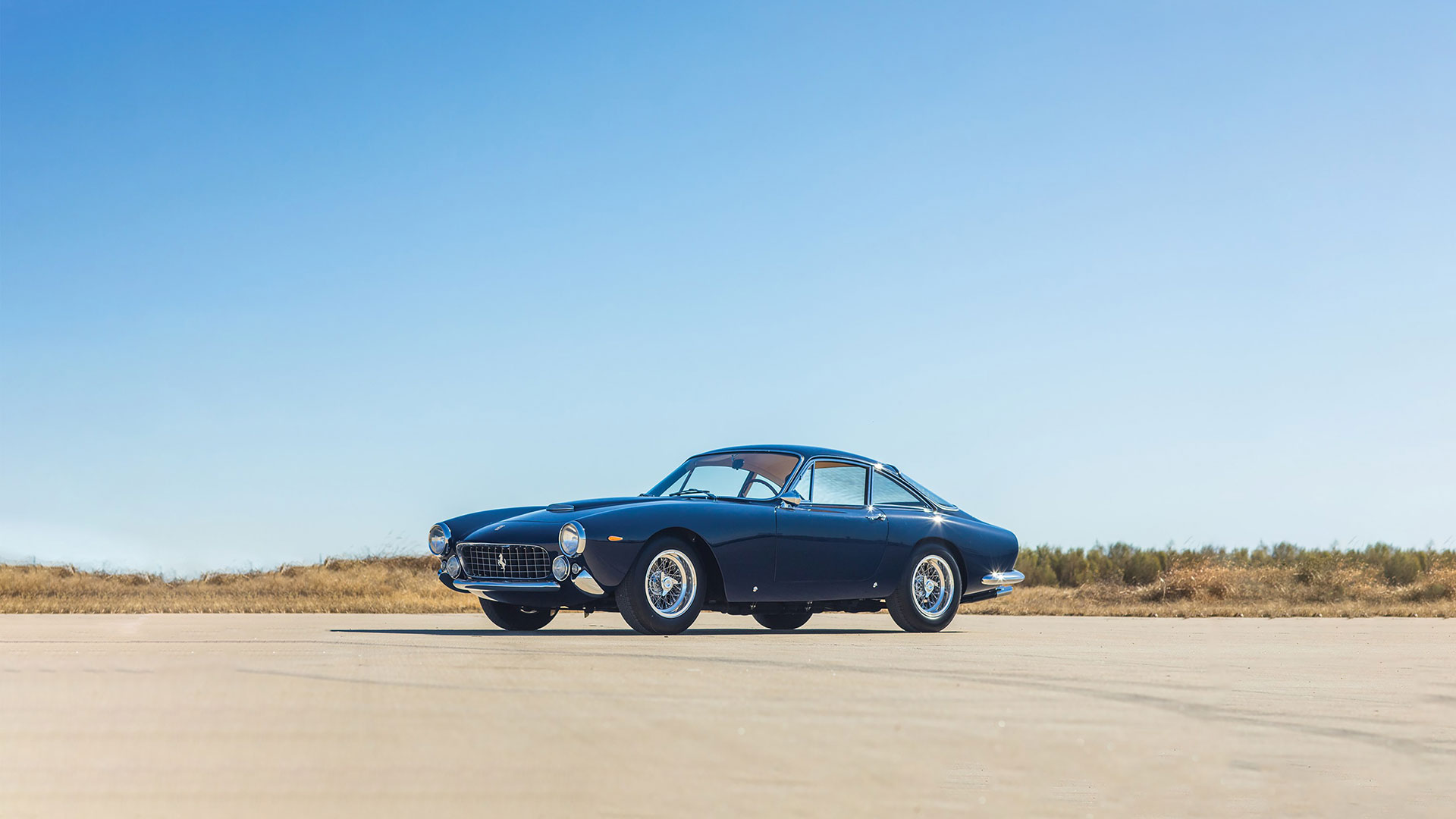{{ $t('Summary') }}
The Alfa Romeo Giulia Sprint GT was the first Giulia sports model to be introduced, and was produced from 1963 to 1965. It was unveiled on September 9, 1963 at a press event at the newly opened Arese plant, and showcased at the auto show the same month. from Frankfurt. In its original form, Bertone's bodywork is known as scalino (step) or "step front", because of the leading edge of the engine compartment cover that sat 1cm above the nose of the car. This copy was fully restored functionally, converted to GTA look and adapted into a classic rally car.
{{ $t('History') }}
The Giulia Sprint GT was originally equipped with the 1570cc displacement version of Alfa Romeo's all-aluminium twin-cam inline four (78mm bore × 82mm stroke, 6.38L oil sump, 7.41L radiator), which debuted on the 1962 Giulia Berlina. This engine, which was powered by two Weber 40 DCOE 4 twin camshaft carburettors, produced 106 PS DIN (78 kW; 105 hp) in the Sprint GT. Like all subsequent models, the Sprint GT was equipped with a five-speed manual transmission with all synchromesh functions. The braking system consisted of four Dunlop disc brakes and a vacuum servo. The rear brakes had an unusual arrangement with the slave cylinders mounted on the axle tubes, whereby the calipers were operated by a system of levers and cranks. A total of 21,902 Giulia Sprint GT were produced from 1963 to 1965, when the model was succeeded by the Giulia Sprint GT Veloce. Of these, 2,274 were right-hand drive: 1,354 cars completely finished in Arese, and 920 shipped in complete knock-down kit form for foreign assembly.

{{ $t('Exterior') }}
The basic body shape, common to all models, was designed by Giorgetto Giugiaro for Bertone. It was one of his first major projects for Bertone, drawing heavily on his earlier design for the Alfa Romeo 2000 Sprint/2600 Sprint. The balance between glass and metal, the influence of the shape of the front and rear windows on the shape of the cabin, and the flat grille with integrated headlamps were groundbreaking styling cues for the time. There are light signs of use on the body. The chrome work is still original and in good condition. The bumpers were removed to give the car a GTA look. The door handles are also in the GTA look. In addition, "Veloce" and "Autodelta" badges were added and extra air intakes were made in the front. The grilles have also been modified. The windscreen was renewed and the side windows were replaced by Plexiglas. The body rubbers were largely replaced during the restoration and are still in good condition. The trunk is still quite original. 4 light-alloy GTA look 6x15 were mounted - in very nice condition. The underside is in moderate condition, there are traces of repairs of previous rust damage to the thresholds, there is light corrosion present, but no rust through. A new rust protection layer was applied.
{{ $t('History Paintwork') }}
The bodywork was completely repainted during restoration. The lacquer has a good gloss and is homogeneous in colour. The finish quality of the paint is good but there are minor finishing flaws and some paint cracks on the hood. There are traces of use and light soiling which can be considered normal for a vehicle used for classic rallies.

{{ $t('History Sheet metal') }}
The body panels are fairly sleek. Paint thickness measurements show that putty has been used to achieve this result. The reveals between the various body panels run moderately parallel. The engine compartment is in a clean restored condition.
{{ $t('Interior') }}
The interior was thoroughly adapted and transformed to be able to drive classic rallies. A roll cage and 4-point Sabelt seat belts were provided. A Classique tripmaster was placed on the dashboard. The steering wheel was replaced by a Momo sports steering wheel. The car comes with the original seats, rear seat and steering wheel. You can also find these photos in the gallery.

{{ $t('Engine and Gearbox') }}
The engine was changed to a 2-litre version that comes from a younger Alfa Romeo model (AR00512 with code 18592, after 1971). The accessories (starter motor, carburettors, radiator,…) are original for this engine. The engine starts smoothly and runs smoothly without noise. There is also no excessive smoke from the exhaust when starting. There are no signs of serious leaks, just the typical "sweating". The exhaust was replaced by a sportier one and is in good condition. The car is equipped with the original power-assisted braking system with 4 disc brakes. The suspension was lowered and fitted with Bilstein shock absorbers. A crankcase protection was also provided under the engine. The engine is a 4-cylinder in-line 1962cc engine with 2 Weber carburettors, good for 132 HP or 97 kW. The original engine was a type AR00502 of 106hp or 78kW. A 5-speed manual gearbox drives the rear wheels.

{{ $t('Maintenance info') }}
The car has just been fully serviced. All fluids and filters were replaced.
{{ $t('Maintenance Documentation') }}
There is no maintenance documentation with this car.
{{ $t('Additional Costs Documentation') }}
The car was registered as an oldtimer. He is therefore on Belgian registration.
{{ $t('Options') }}
The car was converted to rally version.

{{ $t('Non original parts') }}
The car has a 2 liter engine, different front seats, roll cage, suspension, rims, steering wheel, plexiglass in side windows.
{{ $t('What we should know') }}
The Alfa Giulia GT was a popular sports family car in the sixties. Even today, this "letter box" as it is called, remains a very popular classic. The prices of such cars have risen considerably in recent years. According to Alfa Romeo, the car could reach a top speed of "more than 180 km/h"; the Italian car magazine Quattroruote noted a top speed of 181.935 km/h in its December 1964 test.


